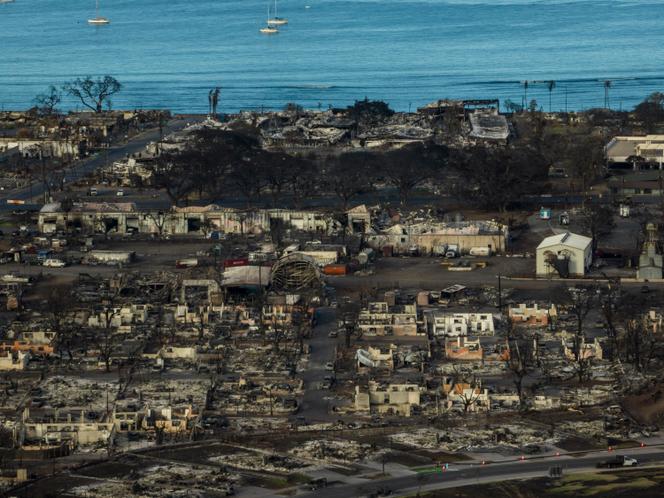


Tropical paradises are also starting to burn. The fires that ravaged the island of Maui, in the Hawaiian archipelago, from August 8 to 9, claimed the heaviest human toll from fires in the US in almost a century. There are 111 dead and hundreds missing, according to the latest death toll from the authorities on Thursday, August 17. The fires also struck a chord with the public because of the dramatic and spectacular images that circulated on social media, showing hundreds of residents and tourists rushing to the sea to escape the flames.
Despite an environment dominated by lush rainforests on an archipelago that enjoys sustained rainfall and is located in the middle of the Pacific, a number of factors increased the destructive potential of the fires. The strong warming trend, the development of the El Niño phenomenon, invasive plant species, and landscape transformations linked to agricultural activities have been identified as elements that heightened the risk. The immediate causes of the fires are still under investigation.
"Hawaii is located on the periphery of the tropics and is sensitive to the subtropical high-pressure dry belt," said climatologist Michael Mann, professor in the Department of Earth and Environmental Sciences at the University of Pennsylvania, "climate change widens this belt and, combined with rising temperatures, tends to dry out the soils, leading to increased drought, such as that which hit Maui this summer." In Lahaina, the western Maui town razed by fire, rainfall data show a decline in precipitation, said geographer Matthew Plackett, associate professor at Coventry University (UK).
Another sign of this drying-up is the decline of rivers. In a 2019 study published in the journal Hydrological Processes, researchers from the University of Hawaii at Manoa have estimated variations in the flow of 23 rivers on the archipelago's five main islands since the late 1960s. The authors note "a general drying up." Since the late 1980s, they have observed an average drop in low-water flows of over 10% per decade. During the dry season, from May to October, they note that more rivers stop flowing, "indicating that more streams may become intermittent."
While the destruction of the town of Lahaina left its mark on people's minds, the drying trend has quietly increased pressure on the archipelago for several years now. For most of the 20th century, Hawaii averaged about 5,000 acres burned each year, Clay Trauernicht, a fire management specialist at the University of Hawaii at Manoa, told the Associated Press (AP). Over the last 20 to 30 years, this area has tripled or quadrupled, he added. With the development of tourism, the drying-up of the islands is also resulting in periodic tensions over the supply of drinking water, used by the large resorts on the coast. As early as January, the local press reported supply cuts in small communities in West Maui.
You have 41.57% of this article left to read. The rest is for subscribers only.
